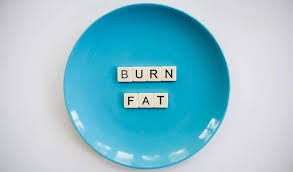Metabolic Confusion Diet has gained major attention for helping people break weight loss plateaus and speed up metabolism naturally. This guide explains what the Metabolic Confusion Diet is, how it works, the right way to follow it, and what to avoid for real results. Learn the key benefits, potential side effects, and science behind calorie cycling so you can make smarter decisions for long-term metabolic health. Discover whether this flexible diet can truly help you lose weight without feeling deprived or slowing down your metabolism.

1. What Is the Metabolic Confusion Diet?
The Metabolic Confusion Diet—also called calorie cycling—is based on one simple idea: you alternate between high-calorie and low-calorie days so your metabolism never adapts to a single calorie level. Traditional diets often cause your body to slow down its metabolic rate after weeks of calorie restriction. Metabolic confusion aims to trick your body into staying active and burning fat consistently.
Here’s the logic: when you eat fewer calories every day, your body senses the deficit and starts conserving energy. But when you occasionally eat more, it “resets” and keeps burning energy at a higher rate. Over time, this pattern can make weight loss steadier and reduce fatigue or hunger.

2. How the Metabolic Confusion Diet Works
The core principle of this diet is cycling calories. You might eat 1,200–1,400 calories one day, then 1,800–2,000 the next. There’s no single formula—it’s about strategic variation.
A typical weekly cycle could look like this:
- Day 1–2: Low-calorie phase (lean proteins, vegetables, light carbs)
- Day 3–4: Higher-calorie phase (healthy fats, complex carbs, full meals)
- Day 5–6: Repeat cycle
- Day 7: Balanced or “free” day
This approach keeps your metabolism guessing. It also reduces the mental burnout of long-term dieting since you’re not constantly in restriction mode.
3. The Science Behind Metabolic Confusion
Metabolic confusion relies on understanding adaptive thermogenesis—the body’s natural tendency to slow calorie burn during prolonged dieting. When calorie intake drops for too long, your thyroid function and energy output can decrease, making weight loss harder.
By cycling calories, you minimize this adaptation. Research on intermittent energy restriction shows that alternating calorie levels may help preserve lean muscle mass, maintain hormone balance, and improve fat metabolism.
While not all studies use the exact term “metabolic confusion,” the scientific foundation behind it—flexible calorie variation—is supported by evidence.
4. Key Benefits of the Metabolic Confusion Diet
1. Prevents Metabolic Slowdown
Regular calorie changes stop your body from adjusting to a predictable intake. That helps sustain fat-burning rates even over long periods.
2. Improves Diet Flexibility
You don’t feel deprived all the time. High-calorie days allow favorite meals and make social eating easier.
3. Supports Mental and Emotional Balance
Unlike strict diets that trigger cravings and guilt, metabolic confusion feels more sustainable because you can eat more without “breaking” your plan.
4. Preserves Muscle Mass
Frequent calorie variation combined with protein intake helps protect lean muscle, which is key for a strong metabolism.
5. Encourages Long-Term Adherence
The plan’s flexible structure helps people stick with it for months—something most restrictive diets fail at.
5. How to Start the Metabolic Confusion Diet Safely
If you want to try it, start with these practical steps:
- Set your baseline calories. Use a TDEE (Total Daily Energy Expenditure) calculator to find your maintenance level.
- Plan your high and low days. For example, reduce about 400–600 calories on low days and return to maintenance or slightly above on high days.
- Keep protein consistent. Aim for 20–30 grams per meal. Protein supports muscle and helps you feel full.
- Eat whole foods. Avoid ultra-processed snacks; focus on vegetables, lean meats, fruits, grains, and healthy fats.
- Stay active. Combine this diet with strength training and moderate cardio for best results.
- Track progress. Adjust your calorie range every 3–4 weeks based on results and energy levels.
6. What to Avoid on the Metabolic Confusion Diet
- Skipping meals: This can mess with your energy balance and slow metabolism.
- Extreme calorie drops: Going too low can lead to fatigue and nutrient deficiencies.
- Overeating on high days: “High-calorie” doesn’t mean binge. Stick to your planned range.
- Neglecting sleep and hydration: Both play big roles in metabolism and fat loss.
- Ignoring consistency: Metabolic confusion works best when done with intention, not random eating.
7. Possible Side Effects and Who Should Avoid It
While the Metabolic Confusion Diet is flexible, it’s not ideal for everyone. Some people may experience:
- Headaches or fatigue during adjustment weeks
- Difficulty tracking calories accurately
- Overeating tendencies on high-calorie days
People with diabetes, thyroid disorders, or metabolic conditions should consult a doctor before trying it. Pregnant or breastfeeding women should avoid calorie cycling altogether.
8. How Long Before You See Results?
Results vary by body type, consistency, and activity level. Most people start noticing changes in 3 to 6 weeks—mainly in energy, fat loss, and muscle tone. The key is patience. The Metabolic Confusion Diet isn’t a quick-fix cleanse; it’s a smarter, flexible long-term method.
9. Positive and Negative Sentiments Around This Diet
Positive: Many people love this approach because it feels realistic. It allows flexibility, reduces guilt, and helps overcome stubborn plateaus without punishing rules. It’s a mental relief compared to calorie restriction diets.
Negative: Critics argue the results may come more from overall calorie awareness than from “confusing” the metabolism. Without discipline, some users swing too far on high-calorie days and undo progress.
The truth sits somewhere in the middle: it works best for those who plan, track, and stay consistent.
10. Final Thoughts
Bottom line — the Metabolic Confusion Diet gives you a more dynamic, forgiving way to manage weight and metabolism. It’s not about starving or stuffing yourself; it’s about keeping your body responsive. If you balance nutrition, activity, and rest, this approach can break plateaus, maintain energy, and help you achieve sustainable fat loss without burning out.

